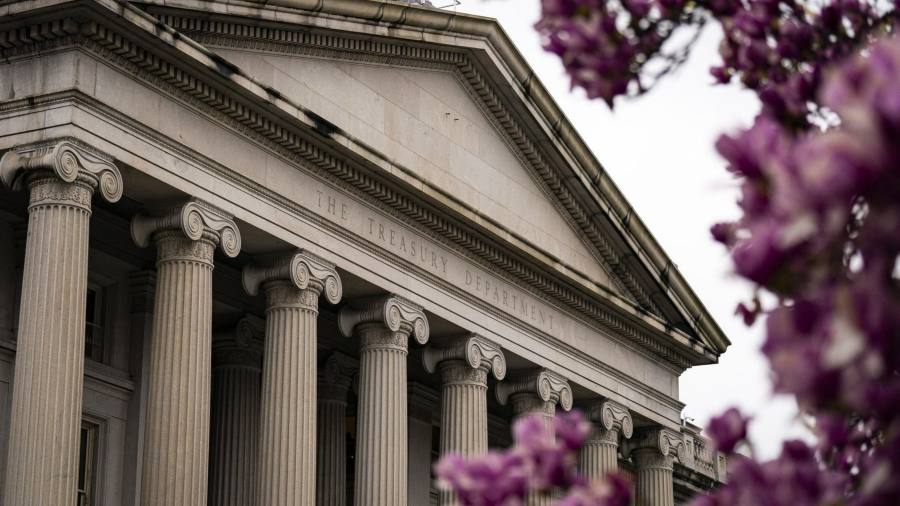The Treasury department on Wednesday said it would repurchase US government debt next year for the first time in decades, in an effort to boost liquidity in the $23tn government bond market.
The programme would allow the Treasury to buy back older bonds, that are typically harder to trade, from primary dealers — banks that act as market makers for the Federal Reserve — and help improve functioning in some corners of the market.
The buybacks are expected to help with cash management, allowing the department to issue more consistent levels of shorter-dated debt.
This would be the Treasury’s first buyback programme since the early 2000s, and comes after liquidity — the ability to easily buy and sell an asset at prevailing market prices — deteriorated late last year to its worst levels since March 2020.
“We think this will support Treasury market functioning because it provides market makers [with] certainty that there will be an end buyer that will come into the market that is willing to buy dislocated securities along the curve for a price,” said Mark Cabana, head of US interest rate strategy at Bank of America.
The rapid growth in the Treasury market, which has quadrupled since 2008, and changes in the make-up of participants in the market have made functioning worse in recent years. The increase in interest rates also hurt liquidity, as greater volatility made it harder and more expensive to buy and sell bonds.
Big banks have retreated from traditional market-making activity in recent years as capital requirements in the wake of the financial crisis have made it more expensive for them to hold government debt on their balance sheets. High-speed traders and hedge funds have stepped in, but the liquidity they provided has not been as consistent and the unwind of leveraged positions has contributed to liquidity problems.
The buybacks will support primary dealers, but are not expected to be big enough to change the dynamics of the post-2008 market. The supplemental details on buybacks also noted the programme would not be used to mitigate instances of acute market stress.
The Treasury department has been considering a buyback scheme since last year, when it first sought feedback on the topic from primary dealers. There were few details in the announcement, except that the programme was expected to start next year, and that it would initially be sized “conservatively”.
The programme is not expected to interfere with the Fed’s efforts to shrink its balance sheet as the Treasury’s bond repurchases would be comparatively small and ultimately offset by issuance over time.
“The idea behind buybacks is to clear this less liquid inventory off dealer balance sheet and replace it with more liquid inventory,” said Guy LeBas, chief fixed-income strategist at Janney Montgomery Scott. “It is a question of market functioning rather than stealth quantitative easing.”
The announcement was part of a broader release from the Treasury department detailing its borrowing plans for this quarter. It said it would maintain its auction size at $96bn in the second quarter, but added that it could boost borrowing as soon as August, to better manage the US government’s cash flow.
Though the bond repurchases had been under discussion since last year, some analysts and investors were surprised at the timing of the announcement as the White House and Republicans clash over the debt ceiling.
“I would have thought they would have waited until after the debt limit was increased,” said Matthew Scott, head of global rates trading at AllianceBernstein.
Read the full article here



